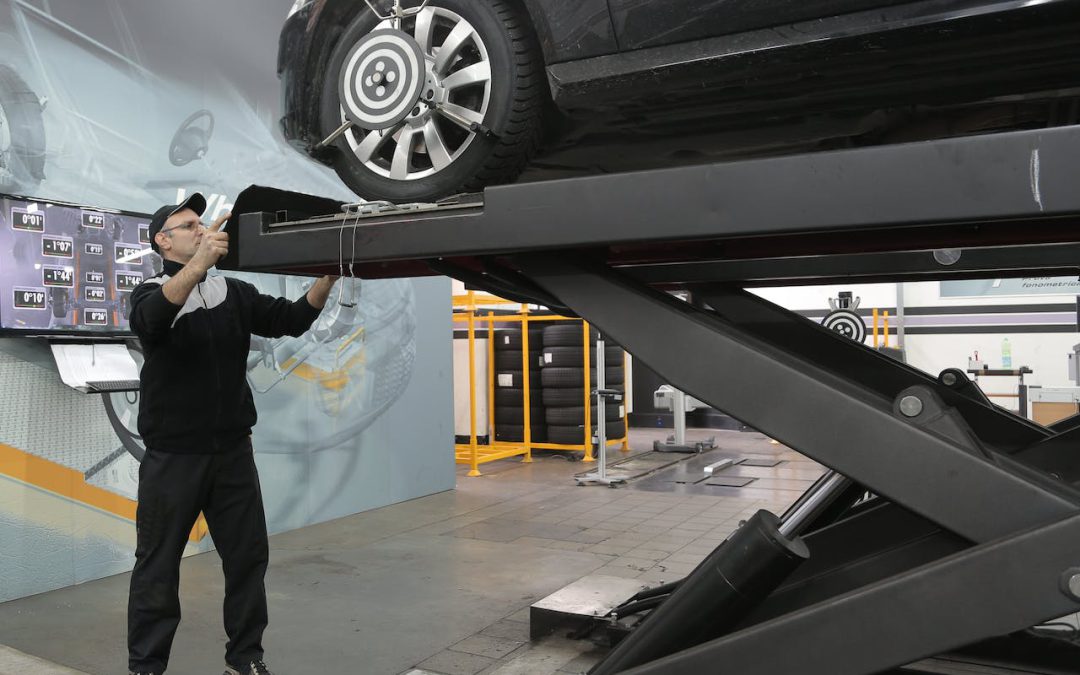Oil change prices can vary based on the type of oil used, the location, and the service provider. Basic oil and filter changes tend to be less expensive, while synthetic oil or work on specialty vehicles usually costs more. Some shops include extra checks or fluid top-ups, while others may charge for premium filters or disposal. Costs can also differ between chain shops, independent garages, and dealerships. Knowing the typical price range helps you avoid overpaying and ensures you still get quality service. The next sections will cover what affects pricing, how to spot fair rates, and what’s typically included in an oil change.
Key Takeaways
- Oil change costs vary and are based on a number of factors, such as the grade of oil, your vehicle’s specific needs, your oil change service location and local labor costs.
- Choosing the right oil – conventional, synthetic blend, full synthetic, or high mileage – can impact not only the upfront price but the overall longevity of your engine.
- By shopping around, between quick lube chains, independent garages and even dealerships, you can weigh cost, convenience and service and decide what works best for you.
- Make sure that you know what you’re getting with an oil change–new oil, filter replacement, inspections, fluid checks, etc.–so you’re getting your money’s worth.
- To prevent overpaying, look up what’s typical in your area, ask about every upsell, and trust your vehicle manual to tell you what’s needed and at what intervals.
- Keep up with innovations in oil change methods and vehicle needs, particularly as the industry shifts towards eco-friendly options and electric cars.
What Determines Oil Change Cost?
Oil change costs are influenced by a combination of technical limitations and economics. Consider that the cost varies depending on oil type, vehicle requirements, service location, labor charges and the services are included. All of these are factors for drivers around the globe and will vary depending on local costs and vehicle models.
Vehicle Needs
Every car is unique. Older vehicles can require more regular changes, contributing to annual expenses. Diesels and some hybrids need special oils that are more expensive. Check your owner’s manual to determine the right oil type and change interval. If you do lots of short drives, your oil gets dirty quicker, so you may need to change oil more frequently, driving up your costs.
Certain cars take more oil, like SUVs and trucks, which increases both the oil and filter cost. Filters themselves tack on another $5-$15 to the invoice.
Service Location
It depends on where you have the oil changed. Quick lube chains tend to be cheap but don’t necessarily come with dealership expertise or specialist knowledge. Local garages can sometimes be a better bargain, although service varies. Dealerships can be pricier, but they’ll often use the exact oil type your manufacturer specified and incorporate those comprehensive inspections. Location matters as well—urban areas or places with a high cost of living have higher rates than rural ones.
Labor Rates
Labor is a stealth cost. Shops that have higher labor rates tend to have better technicians. These fees are generally more expensive in urban areas. Always see if there are disposal or shop fees tacked onto the base price.
Labor rates can differ, so compare before you book.
Labor fees can cover additional inspections or simply the essentials.
Certain shops provide an itemized list of all fees up front, while others don’t.
Included Checks
Inquire what’s included. Most shops will throw in a fluid top-off or filter check, which is nice, too. Some provide a multi-point inspection that can identify other problems before they become serious. Not every provider throws these in for free—occasionally, there’s an upcharge.
Where Should You Go?
Where you should go for an oil change is all about balancing cost, ability, and what’s important to you. Services differ based on price, speed, and depth of care. Your choice might depend on where you live, what type of vehicle you drive, and how much you trust local shops over large chains.
Quick Lube Chains
Quick lube chains generally offer fast service and transparent pricing, often with coupons or seasonal promotions. They focus on getting you in and out quickly, which is convenient if you’re in a time crunch. You may pay less here than at a dealership or independent garage, but the quality of service can vary. Some locations have a reputation for speed but may not always provide careful, thorough work. Not all technicians are trained on every car model, so your experience can differ. If you prioritize speedy service and a lower price, quick lube chains may be a reasonable choice—but be sure to check reviews before deciding.
Independent Garages
Independent garages often provide a more personal touch and can sometimes beat chains or dealerships on price. Many are run by seasoned mechanics with decades of experience who can identify additional problems during your oil change. These shops may go beyond basic oil changes to offer complete inspections and tailored service. It’s wise to inquire about the staff’s certifications and experience because skills can vary widely. Frequenting the same trusted independent garage helps build rapport with your mechanic, which is valuable over time.
Car Dealerships
Dealerships provide service directly from your vehicle’s manufacturer, with technicians who are factory-trained and knowledgeable about your specific brand. Though dealerships tend to be more expensive, they typically use the exact oil and parts your vehicle requires. Sometimes, dealerships offer loyalty programs or bundled deals to reduce costs. Visiting the dealership is often the best option if your car is still under warranty or requires special manufacturer service.
What Is Included?
An oil change isn’t just changing old oil for new. Your cost covers a defined scope of work and supplies, but packages vary. Knowing what’s included lets you decide if you are receiving a fair value, regardless of where you live or what type of vehicle you have.
The Essentials
New oil and a new oil filter come standard in an oil change. Most cars require four to five quarts — some larger engines may require 10 or more quarts. The oil filter, which typically costs between $5 and $15, is another necessity. The type of oil matters: conventional, synthetic, and high-mileage blends each come with their own price and performance traits. Labor, usually $20-$50, is frequently included.
Disposing of old oil – not only due diligence but legally and environmentally necessary. Providers take care of this for you, so you shouldn’t be paying any additional fee for it. DIY oil change kits might contain other substances, but contents vary and will necessitate a one-time supply tool cost, $30 to $100.
A regular package usually includes a swift inspection of liquid levels—coolant, brake and windshield washer—and a peek at fundamental engine components such as belts and hoses. Others may throw in a free check of another system, but it’s not a sure thing.
The Inspections
Always inquire whether an inspection is included with the oil change. They’ll inspect brakes, tires, lights or wipers for free at some providers, but not all.
Inspections are great because they help identify minor problems before they become major repairs. If your oil change includes a multi-point inspection, this can provide peace of mind, but isn’t always included.
Routine inspections are a great way to keep your car running safely and they can catch things you would otherwise miss.
The Upsells
- Checklist of common upsells: air filter replacement, cabin filter, engine flush, wiper blades, tire rotation. If these are provided, inquire as to why they are necessary at this point and if there is any tangible proof. Check your car manual.
- Consider additional services according to your driving pattern and the manufacturer’s timing. For instance, lots of short trips could cause air filters to clog more quickly.
- Reject upsells if they’re not immediate. This keeps your expenses down to the basics.
- Just say yes to services that align with your vehicle’s actual, present needs.
How to Avoid Overpaying
Oil change prices vary widely, from under $50 to $100+ based on oil, filter, and labor. My point is that with a little knowledge of these variables and of service offerings in your area, you can avoid paying too much. Apply the following strategies to make sure you pay only for what you need:
- Compare local prices and establish a standard. A standard oil change with a non-OEM filter could be $35–$60, while synthetic oil changes begin at $65. ALWAYS look at what’s INCLUDED in the price, particularly when certain shops limit oil volume to five quarts.
- Be on the lookout for seasonal or loyalty discounts. A lot of providers have promotions, particularly in slower months, which can knock the price down 10–20%.
- Package services whenever you can. If you’re due for more than one service – maybe a tire rotation and filter change – you can bundle your appointments together to help reduce the overall cost.
- Go synthetic if your driving style or manual indicates. While the sticker price is higher, synthetic oil can stretch as far as 7,500 miles, so you won’t have to make as many stops — and you’ll save money in the long run.
Know Your Manual
Remember – always refer to your vehicle’s manual for the recommended oil change interval and oil grade. This keeps you from needlessly switching early, and gives you leverage to negotiate for the correct service. A lot of new vehicles now require synthetics or specific grades which can impact price, but adhering to manufacturer recommendations prevents upsells of premium oils you don’t need.
Being aware of the details allows you to quiz suppliers on costs and haggle if they attempt to upsell or insist on deluxe features. Maintain a record of your last oil change so you don’t replace it too soon, particularly if you had synthetic oil.
Ask Questions
Ask about the full breakdown of the oil change cost: what’s included, what type and amount of oil, and whether the filter is OEM or aftermarket. Some shops tack on disposal or over oil fees so transparency is key.
Challenge technicians to explain why they recommend specific oils or services. If you drive in extreme temperatures or high miles, they may suggest synthetics, which can increase value. If not, concentrate on your manual.
Decline Extras
Be prepared to say no to services beyond your maintenance needs. Upsells such as engine flushes or premium filters can tack on significant costs for little to no gain if your car doesn’t need them.
Run your budget and only permit necessary work. Don’t forget, you control what services are done, and it’s perfectly reasonable to say no.
Seek Bundles
Check for service packages with an oil change + inspections or fluid top-ups. Some providers give discounted bundles or maintenance plans for ongoing service, which can be a good deal if you require frequent changes.
Consider how the bundle rates stack up against what you’d pay for individual services. Booking multiple services at once saves time and can access additional discounts.

The Future of Oil Changes
Emerging trends in oil change services are set to reshape the way drivers plan for maintenance. Synthetic oils now allow us to lengthen the time between oil changes—up to 16,000 kilometers from 8,000 with regular oil. Certain car manufacturers recommend such 12,000 – 24,000 kilometer intervals when synthetic oil is in play. That translates to less servicing and less cost and time for professionals and students on the go. High-performance synthetic oils don’t just extend intervals. They assist engines in running smoother, increase fuel efficiency, and can even reduce repair requirements in the long term. With improved oils available, the minimum number of changes a car might see in its lifespan is decreasing. This could change how drivers plan for maintenance and shops price it.
Improvements in engine technology, too. Newer engines are designed to run longer and cleaner, so they demand less frequent oil changes. With these engines becoming more pervasive, traditional laws of changing oil every few months are phasing out. Which can be great for the bottom line, but it means drivers need to keep on top of what their particular car requires—using the wrong oil or missing changes can still damage a modern engine.
The surge of EVs is another huge contributor. EVs don’t require oil changes whatsoever, as they don’t utilize the same engine type as ICE cars. As more people transition to EVs, the need for oil changes might decline, transforming the services shops provide and their pricing.
There’s increasing pressure to recycle used motor oil and produce greener oil products. So, some drivers are now seeking out eco-friendly or biodegradable oils, and shops might soon offer a lot more of these options. Prepaid maintenance plans are yet another way that certain drivers lock in the price of oil changes to come. These can be clever for forward thinking, but they don’t suit every driver or vehicle.
Conclusion
Oil change costs vary a ton by where you’re going, what oil you need and what’s in the package. Quick shops, dealers or a trusted local garage – they all have their own sticker. Synthetic oil is pricier, but perhaps your engine will purr and last. Some places even include a few freebies – like filter swaps or a glance at other fluids. To avoid overpaying, see what’s included in the service, request upfront pricing, and read reviews. Drivers who know what they want and ask the right questions save money and receive quality work. Need additional smart car tips and straightforward answers! Return to the blog, join the discussion, and post your own fix tales.
Frequently Asked Questions
1. How much does a typical oil change cost?
A typical oil change will set you back €30-70. It differs based on your oil, your car, and the service center.
2. What affects the price of an oil change?
The primary considerations are oil type, vehicle size, labor expenses, and your geographic location. Synthetic oils are pricier than mineral oils.
3. Is synthetic oil worth the extra cost?
Yes, synthetic oil goes further and guards engines more effectively, particularly in temperature extremes. It might pay for itself in the long run.
4. Can I change my car’s oil myself to save money?
Yes, diy can save you money. You just pay for oil and filters, but you need the right tools and know-how.
5. What is usually included in a professional oil change?
For the most part these services take care of new oil, a new filter, and a basic inspection of fluid and key components.
6. How often should I get an oil change?
Consult your vehicle manual. Most vehicles require an oil change approximately every 8,000–15,000 km, varying by oil grade and your driving style.
7. Are oil prices different in various countries?
Sure, prices vary on labor and taxes and oil brands, but what makes it cost what it does is the same everywhere.
Time for an Oil Change? Let’s Make It Count.
Don’t let something as simple as old oil turn into a big repair bill. At autoTECH Blackhawk, we don’t just do oil changes — we protect your engine, extend the life of your vehicle, and treat you like family every mile of the way.
Whether your dashboard reminder is flashing or you’re just not sure when your last oil change was, we’ve got you. Our expert techs use only manufacturer-recommended oil and filters, and every service is backed by our industry-leading 3-year/36,000-mile warranty.
Need conventional or synthetic? We’ll help you choose what’s best for your car — and your driving style.
Fast. Friendly. Reliable.
Schedule your contactless oil change today and see why drivers across the Bay Area trust autoTECH Blackhawk to keep their engines running strong.
Book now at AutoTECH Blackhawk or give us a call — let’s keep you moving, worry-free.


